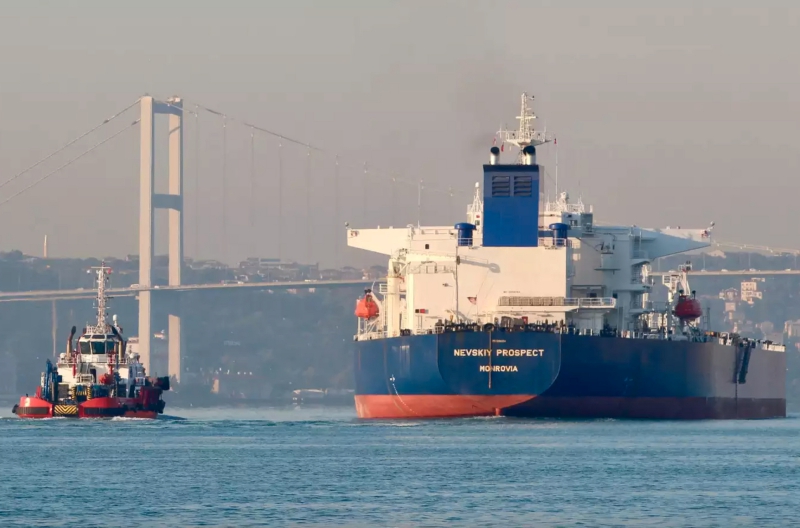Sanctioned crude oil tanker Nevskiy Prospect, owned by Russian shipping giant Sovcomflot. Photo: Reuters
Indian companies will accept Russian oil shipments only if they are transported by compliant, non-sanctioned vessels, India’s Oil Secretary Pankaj Jain confirmed to Reuters last week. This stance was also informally confirmed by Indian oil industry representatives, who reportedly rejected offers from the head of Russian shipping giant Sovcomflot to accept payment in rupees for deliveries transported on sanctioned vessels.
The discount that buyers enjoy when purchasing sanctioned Russian Urals crude (compared to the price for Dated Brent) has fallen from $3.00-$3.50 per barrel in January — before new U.S. sanctions were imposed — to $2.50-$2.90 for March orders. Higher costs for Russian crude have also shrunk its price advantage over Middle Eastern oil to about $3 per barrel, compared to the previous $6-$7 gap. This has left little incentive for Indian refiners to risk secondary sanctions, Reuters’ sources said.
China appears to have adopted the same stance in relation to doing business with sanctioned Russian ships. Russian oil deliveries to China have already halved in February, and local refiners are replacing the shortfall with fuel from Brazil and Africa, The Moscow Times reported on Feb. 14.
The slowdown in the Russian oil trade has led to a rise in the amount of crude stored aboard tankers — a figure that has increased by 17 million barrels since Jan. 10, according to a Goldman Sachs report published on Feb. 5. The report added that the volume of Russian oil in floating storage could reach 50 million barrels before the end of June.
The imposition of sanctions against Russia’s “shadow fleet” by the U.S. Department of the Treasury on Jan. 10 saw 183 vessels designated — as well as several companies insuring them. Ships that had taken on cargo before that date have been given a grace period to complete operations required for unloading. The deadline for completing these operations has been set for Feb. 27.
A separate Reuters report, citing analysis by Lloyd’s List, indicated that the latest U.S. measures mean that approximately 35% of the 669 “shadow fleet” tankers used for transporting Russian, Venezuelan, and Iranian oil have now been sanctioned by the U.S., Britain, or the European Union.
The “shadow fleet” refers to a collection of aging, poorly insured and poorly maintained tankers that Moscow uses to bypass the $60-per-barrel price cap imposed by the G7, EU, and Australia in December 2022. The Western measures were introduced in an effort to limit the Kremlin’s revenues amid the ongoing invasion of Ukraine without upending the international oil market.

